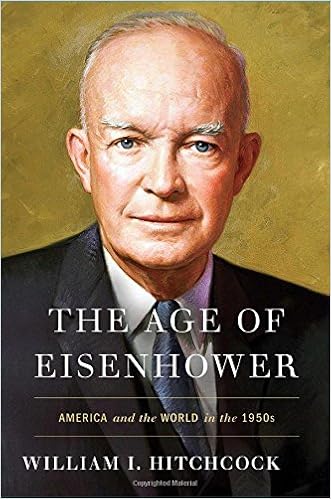Open. Shut. The pandemic continues to drive us crazy.
And for those who have gotten sick, the suffering and frustration and anger and confusion refuses to end.
So we decided to start a new chapter in this pandemic nightmare.
We decided to read. More often. More books.
And when we say “read”, we mean physical books. Audio books have a place (in the car), but electronic versions read on tablets and Kindles and sundry doodads are major no-nos. True bibliophiles want to hold a book, smell a book, rifle through the pages and bask in a momentary breeze.
And so we read.
Choices on our “must-read” list . . .
The Buddhist on Death Row: How One Man Found Light in the Darkest Place (Simon & Schuster, $27)
When His Holiness the Dalai Lama gushes, “This book shows vividly how, even in the face of the greatest adversity, compassion and a warm-hearted concern for others bring peace and inner strength”, you know you are holding an important book.
 Great book, great lessons. In 1981, when he was 19, Jarvis Jay Masters was imprisoned at San Quentin and then accused of murdering a prison guard five years later. A criminal investigator offered to teach him breathing exercises to help him deal with the rage, anxiety and panic as he prepared for his trial. Figuring he had nothing to lose, he tried meditating and likened it to the George Clinton lyric, “Free your mind and your ass will follow.”
Great book, great lessons. In 1981, when he was 19, Jarvis Jay Masters was imprisoned at San Quentin and then accused of murdering a prison guard five years later. A criminal investigator offered to teach him breathing exercises to help him deal with the rage, anxiety and panic as he prepared for his trial. Figuring he had nothing to lose, he tried meditating and likened it to the George Clinton lyric, “Free your mind and your ass will follow.”
Masters transformed his outlook and became a bodhisattva—someone dedicated to reducing others’ suffering. He lives with the threat of execution everyday, yet he makes the most out of confinement. Though not a Buddhist himself, author David Sheff learned a multitude of lessons from all the time he’s spent with Masters. They are shared with readers; to research the book, Sheff made more than 200 trips to death row, visiting Masters almost every week in Tuesdays with Morrie fashion, recorded more than 150 hours of conversations. Sheff also spoke on the phone with Masters for countless hours.
This is a profound book about one man’s capacities for learning, enduring, and ultimately, inspiring others—capacities we all share.
Fallout: The Hiroshima Cover-up and the Reporter Who Revealed It to the World (Simon & Schuster, $27)
New history is made every day, but we never forget events that shattered the world. August 6 marked the 75th anniversary of the first atomic bombing. Fallout exposes how the U.S. government engaged in the biggest cover-up of the 20th century by suppressing the truth about the full effects of atomic weapons and radiation poisoning after the bombings of
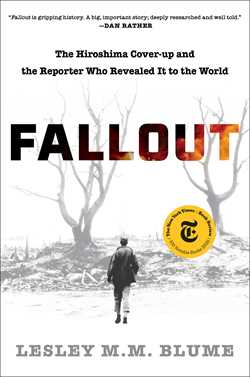
Garnering praise from noted voices including Carl Bernstein, Dan Rather, Adam Gopnik and former Secretary of Defense Bill Perry, the book serves as a timely reminder of the essential role of journalism to save lives when the world is threatened by a global existential crisis. It also is a call for remembrance and deterrence in regard to nuclear warfare. Right now, the Doomsday Clock reads: 100 seconds to midnight according to the Bulletin of the Atomic Scientists—midnight being nuclear annihilation. This setting is closer than the world has ever been to doomsday before, even during the height of the Cold War.
A Private Cathedral (Simon & Schuster, $28)
In James Lee Burke’s 40th (!), beloved Detective Dave Robicheaux must battle the most terrifying adversary he has ever encountered: A time-traveling superhuman assassin.

Mixing crime, romance, mythology, horror and science fiction, the book is a captivating story about the all-consuming, all-conquering power of love. to give away any more would ruin the mysteries . . . and horror.
Leave It As It Is: A Journey Through Theodore Roosevelt’s American Wilderness (Simon & Schuster, $28)
Inspired by Theodore Roosevelt’s crusading environmental legacy and troubled by the fight that still wages today over America’s public lands, acclaimed nature writer David Gessner takes to the road.
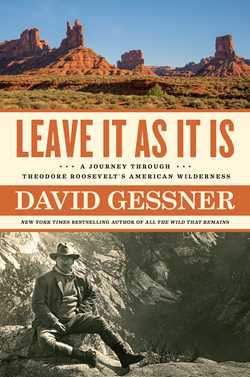
Roosevelt’s life guides Gessner along a wilderness road trip through America’s national parks and wild places. He travels to the Dakota badlands where Roosevelt awakened as a naturalist; to Grand Canyon, Yosemite and the Grand Canyon where Roosevelt escaped during the grind of his reelection tour; and finally, to Bears Ears, Utah, a monument proposed by Native Tribes that is embroiled in a national conservation fight.
Along the way, Gessner questions and reimagines Roosevelt’s vision for today in a profound meditation on our environmental legacy and future. Part travelogue, part environmental clarion call and part biography of one of America’s greatest conservationists, the book has been praised by Robert Redford, who says,it’s a “rallying cry in the age of climate change”.
Reaganland: America’s Right Turn 1976-1980 (Simon & Schuster, $40)
Over two decades, Rick Perlstein has published three definitive works about the emerging dominance of conservatism in modern American politics. With the saga’s final installment, he has delivered yet another stunning literary and historical achievement. In late 1976, Ronald Reagan was dismissed as a man without a political future: defeated in his nomination bid against a sitting president of his own party, blamed for President Gerald Ford’s defeat, too old to make another run.
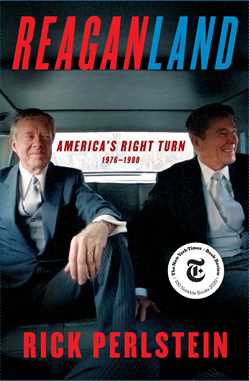
His comeback was fueled by an extraordinary confluence: fundamentalist preachers and former segregationists reinventing themselves as militant crusaders against gay rights and feminism; business executives uniting against regulation in an era of economic decline; a cadre of secretive “New Right” organizers deploying state-of-the-art technology, bending political norms to the breaking point—and Reagan’s own unbending optimism, his ability to convey unshakable confidence in America as the world’s “shining city on a hill.”
Chasing Chopin: A Musical Journey Across Three Centuries, Four Countries, and a Half-Dozen Revolutions (Simon & Schuster, $27)
The Frédéric Chopin Annik LaFarge presents here is not the sickly figure so often portrayed. The artist she discovered is, instead, a purely independent spirit: An innovator who created a new musical language, an autodidact who became a spiritually generous, trailblazing teacher, a stalwart patriot during a time of revolution and exile.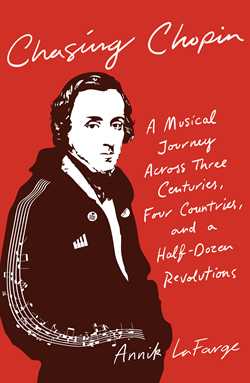
LaFarge follows in his footsteps during the years, 1837-1840, when he composed his iconic “Funeral March”—dum dum da dum—using its composition story to illuminate the key themes of his life. LaFarge visited piano makers, monuments, churches, and archives; she talked to scholars, jazz musicians, video game makers, software developers, music teachers, theater directors and of course dozens of pianists.
Dare we say: True music to our eyes!



 .
. Stevie Nicks (as a solo performer) will be inducted in the Rock & Roll Hall of Fame in 2019. Gold Dust Woman: The Biography of Stevie Nicks (St. Martin’s press, $18.99) details her rise into stardom; author Stephen Davis details her her equally sexy work and life, unearthing fresh details from new, intimate interviews and interpreting them to present a rich new portrait of the star.
Stevie Nicks (as a solo performer) will be inducted in the Rock & Roll Hall of Fame in 2019. Gold Dust Woman: The Biography of Stevie Nicks (St. Martin’s press, $18.99) details her rise into stardom; author Stephen Davis details her her equally sexy work and life, unearthing fresh details from new, intimate interviews and interpreting them to present a rich new portrait of the star. and unstoppable force for change who is determined to expose the truth about the entertainment industry, dismantle the concept of fame, shine a light on a multi-billion-dollar business built on systemic misogyny, and empower people everywhere to wake up and be Brave.
and unstoppable force for change who is determined to expose the truth about the entertainment industry, dismantle the concept of fame, shine a light on a multi-billion-dollar business built on systemic misogyny, and empower people everywhere to wake up and be Brave.



 In
In 
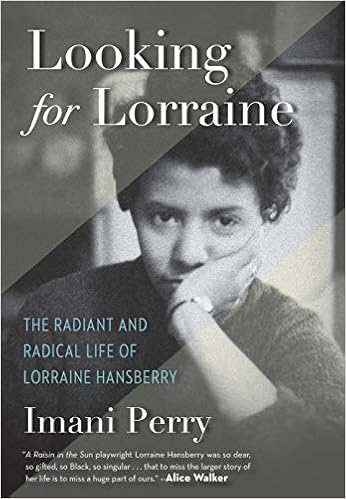

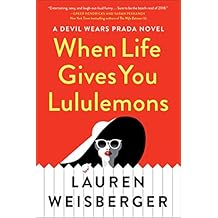 Karolina Hartwell is as A-list as they come. She’s the former face of L’Oreal. A mega-supermodel recognized the world over. And now, the gorgeous wife of the newly elected senator from New York, Graham, who also has his eye on the presidency. It’s all very Kennedy-esque, right down to the public philandering and Karolina’s arrest for a DUI—with a Suburban full of other people’s children. We can’t reveal more because we just pissed in pour pants. It’s that funny!
Karolina Hartwell is as A-list as they come. She’s the former face of L’Oreal. A mega-supermodel recognized the world over. And now, the gorgeous wife of the newly elected senator from New York, Graham, who also has his eye on the presidency. It’s all very Kennedy-esque, right down to the public philandering and Karolina’s arrest for a DUI—with a Suburban full of other people’s children. We can’t reveal more because we just pissed in pour pants. It’s that funny! He provides readers with a page-turning, character-driven narrative, using the personal stories of
He provides readers with a page-turning, character-driven narrative, using the personal stories of
 Taking a wide-angle view of America—and Texas—in the Eisenhower era, Graham reveals how the film and its production mark the rise of America as a superpower, the ascent of Hollywood celebrity, and the flowering of Texas culture as mythology. Featuring James Dean, Rock Hudson, and Elizabeth Taylor, Giant dramatizes a family saga against the background of the oil industry and its impact upon ranching culture—think Spindletop Hill in Beaumont, Texas, and the fabled King Ranch in South Texas. Almost as good as the film.
Taking a wide-angle view of America—and Texas—in the Eisenhower era, Graham reveals how the film and its production mark the rise of America as a superpower, the ascent of Hollywood celebrity, and the flowering of Texas culture as mythology. Featuring James Dean, Rock Hudson, and Elizabeth Taylor, Giant dramatizes a family saga against the background of the oil industry and its impact upon ranching culture—think Spindletop Hill in Beaumont, Texas, and the fabled King Ranch in South Texas. Almost as good as the film. And it is here that we encounter a twist. Miraculously, despite the 1790 Naturalization Act which limited citizenship to “free white persons” (until 1952), Chang and Eng became American citizens under the Superior Court of North Carolina. They then went on to marry two white sisters—Sarah and Adelaide Yates—and father 23 children despite the interracial marriage ban (in place until 1967). They owned 18 slaves and became staunch advocates for the Confederacy, so much so that their sons fought for the South during the Civil War. Huang reveals that it was perhaps their very “otherness” that worked for them: they were neither one individual, or quite two.
And it is here that we encounter a twist. Miraculously, despite the 1790 Naturalization Act which limited citizenship to “free white persons” (until 1952), Chang and Eng became American citizens under the Superior Court of North Carolina. They then went on to marry two white sisters—Sarah and Adelaide Yates—and father 23 children despite the interracial marriage ban (in place until 1967). They owned 18 slaves and became staunch advocates for the Confederacy, so much so that their sons fought for the South during the Civil War. Huang reveals that it was perhaps their very “otherness” that worked for them: they were neither one individual, or quite two. The book explores Lee’s early years: his career as a child star in Hong Kong cinema; his actor father’s struggles with opium addiction; his troublemaking teen years; and his beginnings as a martial arts instructor. Polly chronicles the trajectory of Lee’s acting career in Hollywood, from his frustration seeing role after role he auditioned for go to a white actors in eye makeup, to his eventual triumph as a leading man, to his challenges juggling a sky-rocketing career with his duties as a father and husband. Polly also sheds light on Bruce Lee’s shocking end—which is to this day is still shrouded in mystery—by offering an alternative theory behind his tragic demise.
The book explores Lee’s early years: his career as a child star in Hong Kong cinema; his actor father’s struggles with opium addiction; his troublemaking teen years; and his beginnings as a martial arts instructor. Polly chronicles the trajectory of Lee’s acting career in Hollywood, from his frustration seeing role after role he auditioned for go to a white actors in eye makeup, to his eventual triumph as a leading man, to his challenges juggling a sky-rocketing career with his duties as a father and husband. Polly also sheds light on Bruce Lee’s shocking end—which is to this day is still shrouded in mystery—by offering an alternative theory behind his tragic demise. Tackling a wide range of forms with gusto (including ballet, hip-hop, jazz, ballroom, tap, contact improvisation, swing),
Tackling a wide range of forms with gusto (including ballet, hip-hop, jazz, ballroom, tap, contact improvisation, swing),  Set over the course of three days, The President Is Missing sheds a stunning light upon the inner workings and vulnerabilities of our nation. Filled with information that only a former Commander-in-Chief could know, this is the most authentic, terrifying novel to come along in many years. And a timely, historic story that will be read-and talked about-for years to come.
Set over the course of three days, The President Is Missing sheds a stunning light upon the inner workings and vulnerabilities of our nation. Filled with information that only a former Commander-in-Chief could know, this is the most authentic, terrifying novel to come along in many years. And a timely, historic story that will be read-and talked about-for years to come. The book is behind-the-scenes account of a president who always strove to do what he saw as the right thing, while often disregarding the political repercussions.
The book is behind-the-scenes account of a president who always strove to do what he saw as the right thing, while often disregarding the political repercussions.![The Battle for Beverly Hills: A City's Independence and the Birth of Celebrity Politics by [Clare, Nancie]](https://images-na.ssl-images-amazon.com/images/I/51TSEE6YNLL.jpg) For them, Beverly Hills was a refuge from Los Angeles and its relentless press. Instead of the larger, institutionally corrupt police force, Beverly Hills had a smaller, separate constabulary that was less likely to work hand in glove with the studios and more willing to look the other way at violations of the Prohibition Act. In The Battle for Beverly Hills (St. Martin’s Press, $27.99) Nancie Clare reveals how the stars battled to keep their city free from the clutches of a rapacious Los Angeles and lay the groundwork for celebrity influence and political power. With a nuanced eye and fantastic storytelling, Clare weaves an irresistible tale of glamour, fame, gossip, and politics.
For them, Beverly Hills was a refuge from Los Angeles and its relentless press. Instead of the larger, institutionally corrupt police force, Beverly Hills had a smaller, separate constabulary that was less likely to work hand in glove with the studios and more willing to look the other way at violations of the Prohibition Act. In The Battle for Beverly Hills (St. Martin’s Press, $27.99) Nancie Clare reveals how the stars battled to keep their city free from the clutches of a rapacious Los Angeles and lay the groundwork for celebrity influence and political power. With a nuanced eye and fantastic storytelling, Clare weaves an irresistible tale of glamour, fame, gossip, and politics. He tells the stories behind the stories—riveting in their own right—as he chases leads, cultivates sources, and grapples with the weight of what he uncovers, daring to challenge official narratives handed down from the powers that be. In telling these stories, Hersh divulges previously unreported information about some of his biggest scoops, including the My Lai massacre and the horrors at Abu Ghraib. There are also illuminating recollections of some of the giants of American politics and journalism: Ben Bradlee, A. M. Rosenthal, David Remnick, and Henry Kissinger among them. This is essential reading on the power of the printed word at a time when good journalism is under fire as never before.
He tells the stories behind the stories—riveting in their own right—as he chases leads, cultivates sources, and grapples with the weight of what he uncovers, daring to challenge official narratives handed down from the powers that be. In telling these stories, Hersh divulges previously unreported information about some of his biggest scoops, including the My Lai massacre and the horrors at Abu Ghraib. There are also illuminating recollections of some of the giants of American politics and journalism: Ben Bradlee, A. M. Rosenthal, David Remnick, and Henry Kissinger among them. This is essential reading on the power of the printed word at a time when good journalism is under fire as never before. Adventures of a Young Naturalist–The Zoo Quest Expeditions (Quercus, $26.99) is the story of those voyages. Staying with local tribes while trekking in search of giant anteaters in Guyana, Komodo dragons in Indonesia, and armadillos in Paraguay, he and the rest of the team contended with cannibal fish, aggressive tree porcupines, and escape-artist wild pigs, as well as treacherous terrain and unpredictable weather, to record the incredible beauty and biodiversity of these regions. Don’t take our word for it: Says Barack Obama of Attenborough: “A great educator as well as a great naturalist.”
Adventures of a Young Naturalist–The Zoo Quest Expeditions (Quercus, $26.99) is the story of those voyages. Staying with local tribes while trekking in search of giant anteaters in Guyana, Komodo dragons in Indonesia, and armadillos in Paraguay, he and the rest of the team contended with cannibal fish, aggressive tree porcupines, and escape-artist wild pigs, as well as treacherous terrain and unpredictable weather, to record the incredible beauty and biodiversity of these regions. Don’t take our word for it: Says Barack Obama of Attenborough: “A great educator as well as a great naturalist.” Former federal prosecutor Lis Wiehl’s Hunting Charles Manson (Thomas Nelson, $26.99) is a historical thriller of the crimes and manhunt; in the process, she reveals how the social and political context that gave rise to Manson is eerily similar to our own.
Former federal prosecutor Lis Wiehl’s Hunting Charles Manson (Thomas Nelson, $26.99) is a historical thriller of the crimes and manhunt; in the process, she reveals how the social and political context that gave rise to Manson is eerily similar to our own.![Richard III: England's Most Controversial King by [Skidmore, Chris]](https://images-na.ssl-images-amazon.com/images/I/51kkyj5fX6L.jpg) In Richard III: England’s Most Controversial King (St. Martin’s Press, $29.99) acclaimed historian Chris Skidmore has written the authoritative biography of a man alternately praised as a saint and cursed as a villain. Was he really a power-crazed monster who killed his nephews, or the victim of the first political smear campaign conducted by the Tudors?
In Richard III: England’s Most Controversial King (St. Martin’s Press, $29.99) acclaimed historian Chris Skidmore has written the authoritative biography of a man alternately praised as a saint and cursed as a villain. Was he really a power-crazed monster who killed his nephews, or the victim of the first political smear campaign conducted by the Tudors?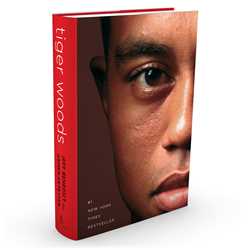 Winner of 14 major golf championships and 79 PGA Tour events, Woods was the first billion-dollar athlete, earning more than $100 million a year in endorsements. But it was all a carefully crafted illusion. As it turned out, Woods had been living a double life for years—one that exploded in the aftermath of a Thanksgiving night crash that exposed his serial infidelity and sent his personal and professional life off a cliff. Tiger Woods (Simon & Schuster, $30) is based on three years of extensive research, and drawing on more than 400 interviews with people from every corner of Woods’s life.
Winner of 14 major golf championships and 79 PGA Tour events, Woods was the first billion-dollar athlete, earning more than $100 million a year in endorsements. But it was all a carefully crafted illusion. As it turned out, Woods had been living a double life for years—one that exploded in the aftermath of a Thanksgiving night crash that exposed his serial infidelity and sent his personal and professional life off a cliff. Tiger Woods (Simon & Schuster, $30) is based on three years of extensive research, and drawing on more than 400 interviews with people from every corner of Woods’s life.